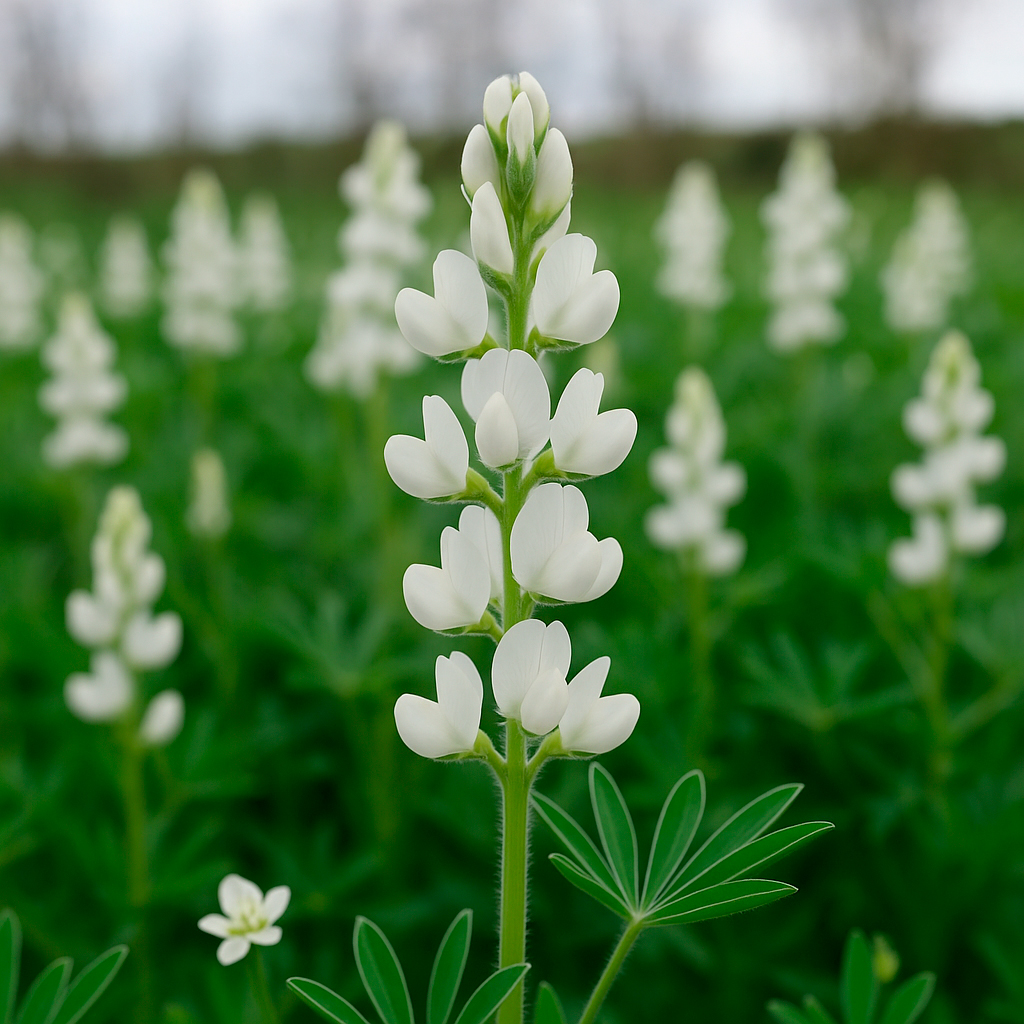White lupin (Lupinus albus) has proven to be one of the best options when looking for a cover crop or green manure that improves soil structure, controls erosion and provides nutrients in a natural way. This annual legume is capable of fixing atmospheric nitrogen through symbiosis with soil bacteria, which makes it an ally in agricultural rotations or orchards where the aim is to recover or maintain fertility without a high chemical input.
Its root system is deep and extensive, favoring water infiltration and the improvement of impoverished or light soils. According to studies in Mediterranean regions, lupine improves the soil’s capacity to filter water and reduces nutrient leaching when used as a cover crop during autumn and winter.
In terms of agronomic requirements, white lupine prefers well-drained soils, with moderately acid or neutral pH, and avoids very calcareous or waterlogged soils.
It can be sown directly in the field without transplanting, which facilitates its inclusion as green manure even for those who manage orchards or small plots.
The usefulness of this cover crop lies not only in providing organic matter at the end of its cycle – when it can be buried or incorporated into the soil – but also in promoting the biodiversity of the soil and the surrounding ecosystem: improving microbial life, attracting beneficial insects and reducing weed pressure.
In short, incorporating white lupine into your rotation plan or as part of your organic garden doesn’t just mean planting another legume; it means betting on a proven agronomic method that combines ease of cultivation, low maintenance, soil improvement and sustainability.


Reviews
There are no reviews yet.